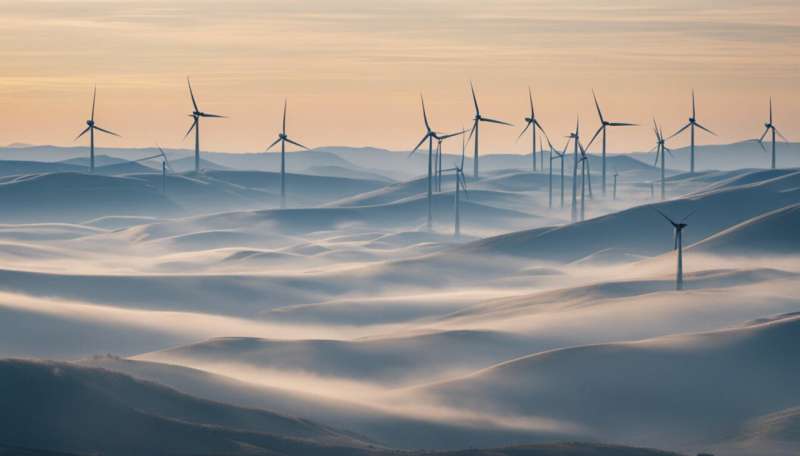Wind turbines - bigger means more environmentally friendly

(Phys.org) -- A study conducted by researchers from the ETH and Empa has come to the conclusion that large sized wind turbines produce "greener" electric power than small ones. Environmental benefits have also accrued as wind turbine producers gain experience and learn from each other. The developers of life-cycle analyses have also profited from the experience of the last 30 years of wind generator usage because this allows them to fine tune their techniques, enabling them to better estimate the effects of new technologies over large timespans.
Wind power is one of the beacons of hope among the various sources of renewable energy. But exactly how "ecological" are wind turbines in reality when taking into account every relevant aspect over their entire life-cycle? These include the energy necessary to manufacture, produce and transport the materials from which they are made all the way through to the energy used in their installation, operation and dismantling. In a scientific article in Environmental Science & Technology, a research group from the ETH Zurich, Empa and Radboud University, Nijmegen (Holland) has provided a new perspective on this topic. They conclude that the larger the wind generation plant, the greener is the electricity that it produces.
According to the main author of the study, Marloes Caduff, this effect is due to a combination of plant size and the lessons learned by manufacturers as their experience increases over time. Doubling the performance of a wind turbine does not automatically mean that twice as much energy and materials are necessary to construct it. In fact it requires only slightly more energy to build wind energy plants on a large scale than it does for small ones. Caduff adds that of the main reasons why electric power produced by large-scale plants is greener is because the manufacturers are gaining experience and learning from each other, thus accelerating progress in the design and construction of these systems. This has meant for example that the shape of the rotor blade could be quickly optimized, allowing better exploitation of the available wind power without the necessity of increasing the size of the turbine tower or generator head.
Wind turbine manufacturers now have about 30 years of development experience under their belts. In 1980 the average rotor diameter was about 15 meters; today plants exist whose rotor diameters are up to 10 times larger, for example those in the «Alstom Haliade 150» offshore installation off the French coast. Scientists working on methodologies for ecobalance life-cycle analyses have also been able to take advantage of these three decades of technological development. A team of Empa researchers headed by Hans-Joerg Althaus is investigating if the development of wind turbine plants is following the same defined set of rules as any other "new" technology. After all, they too must follow the path from drawing board to prototype to pilot plant to become a reality. The results of the continuous further development and up-scaling of wind turbine plants are now feeding into the methodology of life cycle analyses, making it possible to take into account new technologies in a meaningful way when appropriate.
Journal information: Environmental Science & Technology



















